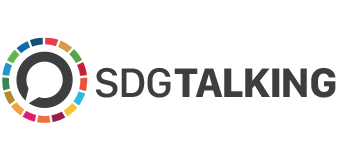In an increasingly digital and interconnected world, access to education is more crucial than ever. However, a significant digital divide has emerged, disproportionately affecting underserved students who lack the necessary tools and internet connectivity for remote learning. To address this issue and ensure equity in education, numerous initiatives have been launched to bridge the digital divide and provide all students with equal opportunities to learn and succeed.
The Digital Divide in Education:
The digital divide refers to the gap between those who have access to digital devices and reliable internet connections and those who do not. This divide has become particularly evident in the context of education, where technology plays an integral role in learning, especially during the COVID-19 pandemic.
Challenges Faced by Underserved Students:
Underserved students, including those from low-income families, rural areas, and marginalized communities, face several challenges due to the digital divide:
- Lack of Devices: Many underserved students do not have access to personal computers or tablets needed for remote learning.
- Limited Internet Access: A significant portion of these students lacks reliable internet connectivity, making it difficult to participate in online classes or access digital resources.
- Unequal Learning Opportunities: Without access to digital resources, underserved students may miss out on educational opportunities, fall behind in their studies, and face academic setbacks.
Initiatives to Bridge the Digital Divide:
Several initiatives and strategies are being implemented to address the digital divide in education:
- Device Distribution Programs: Schools and organizations are distributing laptops, tablets, and other digital devices to underserved students to ensure they have the tools needed for remote learning.
- Internet Connectivity Solutions: Initiatives such as providing Wi-Fi hotspots, partnering with internet service providers, and expanding broadband infrastructure aim to improve internet access for students in remote areas.
- Low-Cost Internet Plans: Some organizations are collaborating with internet providers to offer affordable internet plans to low-income families, ensuring that they can stay connected for educational purposes.
- Community Centers: Establishing community centers with internet access and educational resources allows underserved students to bridge the digital gap in a supportive environment.
- Digital Literacy Programs: Educational institutions are offering digital literacy programs to help students and their families become more proficient in using technology for learning.
- Open Educational Resources (OER): The availability of free or low-cost digital learning materials, such as textbooks and educational software, can alleviate the financial burden on underserved students.
Importance of Equity in Education:
Equity in education is not just about providing access to technology; it’s about ensuring that all students have an equal opportunity to learn, grow, and succeed. Educational equity promotes social justice and economic mobility, breaking the cycle of disadvantage that can persist across generations.
The Road Ahead:
While progress has been made in bridging the digital divide, challenges persist. Sustainable solutions require continued collaboration among governments, educational institutions, non-profit organizations, and the private sector. Moreover, the lessons learned during the COVID-19 pandemic underscore the importance of resilient education systems that can adapt to evolving challenges and provide equitable access to quality education for all students, regardless of their socio-economic backgrounds or geographic locations. As these initiatives continue to expand, they offer hope for a future where education is truly a pathway to opportunity and success for every child.



 UN
UN 


